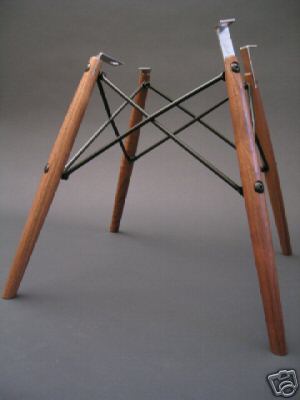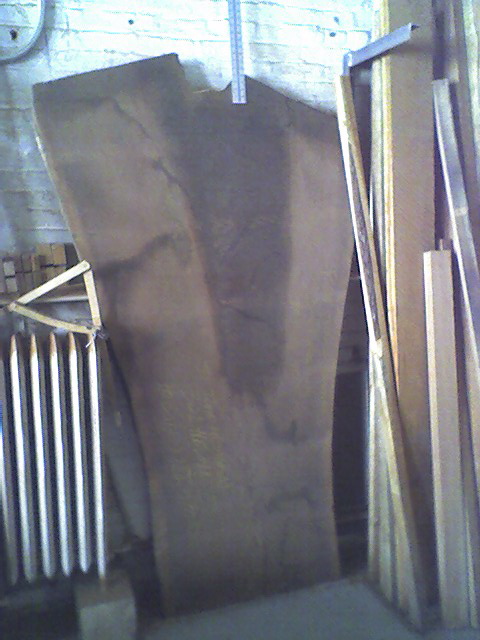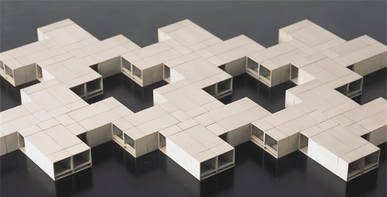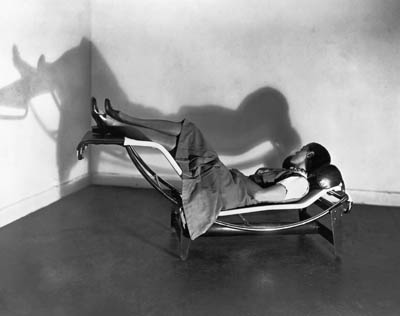Schwarz
View current page
...more recent posts

neptune crossing
camper van photos
The massive central door in the side of Noah's Ark was thrown open Saturday -- you could say it was the first time in 4,000 years -- drawing a crowd of curious pilgrims and townsfolk to behold the wonder.)))RIGHT!(((
Of course, it's only a replica of the biblical Ark, built by Dutch creationist Johan Huibers as a testament to his faith in the literal truth of the Bible.
Reckoning by the old biblical measurements, Johan's fully functional ark is 150 cubits long, 30 cubits high and 20 cubits wide. That's two-thirds the length of a football field and as high as a three-story house.
As the winds and water of Hurricane Katrina were receding, presidential confidante Karen Hughes sent a cable from her State Department office to U.S. ambassadors worldwide.
Titled "Echo-Chamber Message" -- a public relations term for talking points designed to be repeated again and again -- the Sept. 7, 2005, directive was unmistakable: Assure the scores of countries that had pledged or donated aid at the height of the disaster that their largesse had provided Americans "practical help and moral support" and "highlight the concrete benefits hurricane victims are receiving."
Many of the U.S. diplomats who received the message, however, were beginning to witness a more embarrassing reality. They knew the U.S. government was turning down many allies' offers of manpower, supplies and expertise worth untold millions of dollars. Eventually the United States also would fail to collect most of the unprecedented outpouring of international cash assistance for Katrina's victims.
Allies offered $854 million in cash and in oil that was to be sold for cash. But only $40 million has been used so far for disaster victims or reconstruction, according to U.S. officials and contractors. Most of the aid went uncollected, including $400 million worth of oil. Some offers were withdrawn or redirected to private groups such as the Red Cross. The rest has been delayed by red tape and bureaucratic limits on how it can be spent.
In addition, valuable supplies and services -- such as cellphone systems, medicine and cruise ships -- were delayed or declined because the government could not handle them. In some cases, supplies were wasted.
The struggle to apply foreign aid in the aftermath of the hurricane, which has cost U.S. taxpayers more than $125 billion so far, is another reminder of the federal government's difficulty leading the recovery. Reports of government waste and delays or denials of assistance have surfaced repeatedly since hurricanes Katrina and Rita struck in 2005.

tapered dowel legs
Plays about architects don’t have much of track record in New York, at least not since Ibsen’s “The Master Builder.” In January, th Times dismissed a new play about Frank Lloyd Wright as a “dreary drama” that focussed too much on Wright’s tirades against contractors, a subject that, however easy it may be for people to identify with, doesn’t make for stirring theatre. But things might turn out differently for “The Glass House,” a new play that explores the story of Mies van der Rohe’s Farnsworth House, which was completed in 1951, outside Chicago, if only because it is a play about architecture only in the sense that “A Streetcar Named Desire” is a play about public transit. “The Glass House” explores the romantic relationship between a female client and a male architect that merely happens to have, at its center, one of the most famous houses in history. The tensions between Dr. Edith Farnsworth, who dreamed of commissioning a great work of architecture, and Mies van der Rohe, who seduced her into letting him build the house he wanted, represent the stresses of almost every client-architect relationship. “It is the story of people who were together for five years and built this wonderful house, and then they sued each other,” June Finfer, the playwright, said the other day.
Gov. Eliot Spitzer’s appointment last week of two top officials to a development corporation that had been considered all but dead appears to set the stage for yet another power struggle at ground zero.
In a way it also seems to be a rebuke for the city’s recent solo announcement that the Joyce Theater would be the sole occupant of a performing arts center planned for the former World Trade Center site. Many of those involved in planning Lower Manhattan now wonder whether the center, to be designed by Frank Gehry, will become the focus of a long tug of war.
The revival of the Lower Manhattan Development Corporation is perhaps the clearest sign that the Spitzer administration is determined to take back the reins, or at least strengthen its grip, on the center. Having chosen a master plan and a memorial design and allocated federal money for cultural programs, the development corporation said last summer that its work was done. The agency had already been defanged by George E. Pataki, then the governor; he had bowed to criticism from relatives of 9/11 victims and eliminated the Drawing Center and an International Freedom Center from the site. Yet last Monday Governor Spitzer announced that he had appointed Avi Schick as chairman of the development corporation and David Emil as president. Mr. Schick is also president of the Empire State Development Corporation, the state’s economic development agency, and served as a deputy attorney general under Governor Spitzer, who was then attorney general. Mr. Emil owned Windows on the World, the restaurant at the top of the World Trade Center, and is a former president of the Battery Park City Authority.
A Charles Dickens theme park opens in Kent next month. Don't go expecting grimy Victorian authenticity, says Simon Swift - just enjoy the Great Expectations log flume
William Blake saw all this coming with the dawning of the industrial revolution in the late 18th century, elaborating a cautionary cosmology that pitted the forces of reason, efficiency and utility against the values of imagination, creativity, empathy and delight. But it has taken until the 21st century for his ship to come in, and it's the discipline of design, and the discussion around it, that are, by ever-increasing necessity, driving social change. Where design in North America has historically focused on tarting up consumer goods to stimulate sales, the shift is now toward designing responsibly, enhancing the self-expression of the consumer, and aiding the collective good.
Construction on the Second Avenue subway line is kicking into gear this week, prompting developers, contractors, and architects to consider various uses for the rare rock that will be excavated from Manhattan's East Side. Some say the expensive rock, known as " Manhattan Schist," could be used for the construction of a grand project in the region.
The Cathedral of St. John the Divine in Morningside Heights was built from rock recovered when the no. 1 subway line was excavated in 1904. Ellis Island was also expanded during the 1930s when rock and dirt from quarrying the lettered subway tunnels was used as landfill to expand the island to 32 acres from about five acres. The landfill under Battery Park City was built partly with rock excavated from the former site of the World Trade Center.
A section of Eero Saarinen's 1962 TWA Terminal at John F. Kennedy International Airport known as the "trumpet" will be getting a little fanfare of its own sometime next week; the piece will be moved in preparation for construction of the new JetBlue Airways terminal.
[...]
The new JetBlue terminal should be completed by Fall 2008, Baldwin estimates. In the meantime, the trumpet will have to be moved twice—once to make way for construction, and a second time to attach the structure to the back of the new terminal, where it will be used as an observation deck. If all goes as planned, the trumpet will be settled in its final location sometime this summer.
- - - - - - - - - - - - - - - - - - - - - - - - - - - - - - - - - - - - - - - - - - - - - - - - - - - - - - - - - - - -
Long before IKEA's prefabricated houses, there were Lustrons. Carl Strandlund's Lustron Corporation manufactured metal ranch houses between 1948 and 1950, and Americans built 2,680 of them.
Arlington, Va., just outside Washington, D.C., has six Lustron houses—or it did until this week, when a new owner demolished the so-called Barcroft Lustron, constructed in 1949.
A local group, the Arlington Heritage Alliance, tried to save the Barcroft Lustron. One of its members tried to convince owner Andy Symonds to allow the group time to disassemble and store it.
Bulldozers destroyed the 1,085-square-foot house on Monday to make way for a new residence on the .22-acre site. "It was not fiscally reasonable," to stall construction of his new five-bedroom house, Symonds says. "[The Lustron] was not practical for today's day and age."
- - - - - - - - - - - - - - - - - - - - - - - - - - - - - - - - - - - - - - - - - - - - - - - - - - - - - - - - - - - - -
Phoenix Tries to Prevent Loss of Another Modern Bank
L.A. Wildfire Damages Paul Williams House
Painted Wall Signs Are Disappearing, But Is Restoration the Answer?
european wild party photos
Pitchfork is a 98 unit residential community made up of single-family homes, cottages, and multi-family buildings. Coburn Development planned, designed, and built this neighborhood, which contributes desirable and affordable housing to Mt. Crested Butte while responding to its mining heritage and mountain town appeal.
dylan photographed by elliott landy
...the iconic minimalist scuplture installed by artist Frosty Myers at 599 Broadway on the corner of Houston and Broadway back in the early 1970's, but removed for structural reasons in 2002—will rise again on the same wall. Per The Villager, 30 additional feet of wall space will be added so the beams that form the structure can rise higher, allowing for the installation of (you see this coming, right?) street-level billboards. 'The Wall' will also be lit at night for the first time
drinking images
In his new book, Last Harvest: How a Cornfield Became New Daleville, Witold Rybczynski follows the design, construction, and marketing of a new residential subdivision over the course of several years. In the process, he explains how modern homes and communities are built. In today's excerpt, the first of three, Rybczynski examines why we live in houses. Tomorrow's excerpt explains how Americans fell in and out of love with the ranch house. Wednesday's slide show follows the evolution of New Daleville step-by-step, from cornfield to subdivision.slate
Frank Gehry's first New York City building is a minor mood piece, not the sort of rhapsodic extravaganza his adorers are used to. At one time, he had hoped to debut with a bent-metal Guggenheim Museum on the East River; he still plans to stage a full-scale invasion of Brooklyn with an all-Gehry district at Atlantic Yards. Meanwhile, there is this milky hulk on the Hudson, the headquarters of Barry Diller's Internet empire, IAC.
The building reaches its apex of glamour in wretched weather. Fog and snow haze its edges and bleach its white skin whiter, so that it seems to be constantly evanescing and rematerializing. On such dim days, the ceiling lights inside make the building fluoresce.
I wish it could always give that impression of indeterminacy. During construction, drivers along West Street saw drunken columns rising aslant from wavy concrete floors. When the white glass went on, some took it for a temporary protective film. Surely, they thought, it's not always going to look that way?
rago modern furniture auction
saturday and sunday items in catalog - lambertville nj (just accross the delaware river from newhope pa
signless in sao paolo
walnut slab / edit : johns new table
Space units for residential buildings, 1961
Design: Bernd Meurer, Herbert Ohl
Photo: Ernst Fesseler
© Ulmer Museum/HfG Archiv
im not sure how pure an experience people expect in their music listening experience.
is it a matter of a club surviving or not -or- crass profiteering? i suspect in the case of places i would go to its about survival.
Whoo, hoo, yeah
Whoo, hoo, yeah
Shell adore you and shell floor you
With her wisdom and her vision
And youll love it and think of it
Till you lose all intuition
Come on
She can move you and improve you
With her love and her devotion
And shell thrill you and shell chill you
But youre headed for commotion
And youll need her so youll feed her
With your endless dedication
And the quicker you get sicker
Shell remove your medication
Get the firehouse
cause she sets my soul afire
Get the firehouse
And the flames keep gettin higher
Shes like bad weather but it seems so good
Youd never leave her but you know you should
Shes like bad weather but it seems so good
Youd never leave her but you know you should
Ooh
Get the firehouse
cause she sets my soul afire
Get the firehouse
Whoo, hoo, yeah
Get the firehouse
Whoo, hoo, yeah
materialicious
corn-gratz justin on your new materials blog
Lancaster County, Penn., located in the southeastern corner of the state and within hours of New York, Philadelphia, Baltimore, and Washington, D.C., is an area destined for growth.
Today many parts of Lancaster County are becoming theaters of conflict between large, new residential developments and centuries-old farms. Often, money trumps such intangibles as history, character, and scenery. How can family farms containing dozens of acres coexist with more and more residential development?
With help from nonprofits and municipal planners, Lancaster County's small farms are surviving as wide gaps in the suburban landscape
Stop Faking It
Germany's Museum Plagiarius showcases knockoffs. The founders are determined to protect small designers from counterfeiters that stifle innovation
by Rachel Tiplady
Caveat emptor, let the buyer beware, warns one of the oldest sayings in the book. That's also the message behind a new museum of counterfeit goods, which opens to the public on Apr. 1. The Museum Plagiarius, in the German city of Solingen near Cologne, will permanently exhibit some 300 original products together with inferior rip-offs produced by unscrupulous companies out for a quick buck.
Its message: Plagiarism kills innovation. "Companies have spent time and money making these products; if someone steals that idea, then they are also stealing the incentive to invent," says the museum's curator, Christine Lacroix, who is also managing director for nonprofit lobby group Aktion Plagiarius, which runs the museum and offers design companies legal advice and regular workshops to help fight against organizations that counterfeit.
to fix/fill chips in a tub
bungalow black box
mercedes wood block print $65
In some sense, the iconic photograph of Rosa Parks recreating her quiet act of rebellion on a bus in Montgomery, Ala., belongs to every American. But as a practical matter, it belongs to Bill Gates.
Anyone wanting to use that image in a book or on a Web site must first license it from Corbis, a corporation founded and owned by Mr. Gates, who is better known for starting Microsoft. The photo is among the 11 million prints and negatives in the legendary Bettmann archive, which Corbis bought in 1995.
Since that first purchase, Corbis has spent tens of millions of dollars acquiring image collections and other companies, hired more than 1,000 people and set up two dozen offices worldwide. Although Corbis says it brings in some $250 million a year in sales, it has yet to turn a profit.
Now the company is shuffling its top executives as it takes on new challenges, building up a business in rights management and plotting its response to the rise of low-cost online photo services that threaten to undermine its lucrative stock photo sales.
The company plans to announce Tuesday that Gary Shenk, the president, is being made chief executive as well. Mr. Shenk, 36, is an expert in rights licensing who has risen rapidly through the Corbis ranks since he was hired in 2003 from Universal Studios, where he started a small licensing unit.
texas wear subset of melmac
solar pool heater
from off-grid
calling adam kalkin
They first announced they were taking orders in January of '04--just over three years ago and yet with all this publicity we never heard anything about one being built. However, Adam Kalkin's website currently says there is a 6 month waiting list and there was another article just last month
crumbly chumley's
AIA top 150 american buildings
velvets 1966 super8 at a high school in nj
Fugs Tuli Kupferberg Sings the Bum Song and explains

Judd
lived in new york. began making furniture in 1973, when he moved from to marfa, in texas. the reason was practical, as he couldn’t find anything suitable locally – the first pieces he executed were beds for his children. the early furniture was executed with plain planks of pine. ‘I figured it out so I could tell the lumberyard what I wanted – four pieces, five feet long, three pieces, two feet long – and they would cut them for me. they wouldn’t do too many and they wouldn’t do anything fancy. they would just chop it up. for a long time the basic module was the width of the wood: 1x12s, 2x12s. for some racket of the lumberyards, the twelve inches were really eleven inches. most of the new work is in metric measurement.'said donal judd. later he worked in sheet metal. the wooden pieces are all still made by one fabricator who worked with judd and made the furniture to his specification. the metal is made of aluminium with a choice of 20 different coloured enamels. some pieces also come in copper which is particularly spectacular.
pegboard book shelves
tim hunkin's the secret life of machines
australian container home (built!)
charlotte perriand
Here, a personal anecdote might be relevant. When I interviewed Perriand in 1997 and mentioned the photograph of her reclining on the chaise lounge with her head turned away from the camera, she responded angrily to a question about Beatriz Colomina’s reading of the image as representing Le Corbusier’s denial of her authorship and creative vision.(2) Perriand told me that she herself had set up the shot, that Pierre Jeanneret took the photo, and that Le Corbusier played no role in its conception and in fact was not there at the time. She insisted that it was her choice to turn her head in order to emphasize the chaise rather than its occupant, and that it was also her choice to use that image in her photomontage of the model apartment that she designed with Le Corbusier and Jeanneret for the 1929 Salon d’Automne apartment building. Nor was she troubled by the fact that the pivoting chair that she designed and displayed on her own was at- tributed jointly to Le Corbusier-Jean- neret-Perriand when Thonet began producing the partnership’s furniture in 1930. Perriand saw this as an opportunity to have the chair manufactured and con- cluded that it would have more impact as part of the atelier’s line of tubular-steel furniture: attaining individual recognition as a designer was less important than hav- ing the chair regarded as part of a collec- tive vision of modern living. She saw herself as an equal participant with consid- erable choice and control in her collabora- tion with Le Corbusier and Jeanneret.
A second issue to consider is the rela- tionship between Modern architecture and the entry of women into the profession. Although Le Corbusier was no feminist hero, his atelier seems to have been a place where several women designers chose to work, including Perriand and Stanislavia Nowicki before World War II and Edith Schreiber, Blanche Limco, and Maria Fenyo immediately afterward. To what extent did the culture of the Modern Movement, and in particular Le Cor- busier’s commitment to new attitudes and social mores, help foster women’s partici- pation in the profession? Did the adven- ture of creating something new, the Modern Movement’s commitment to col- lective values, and its emphasis on collabo- ration (however paradoxical, given Le Corbusier’s self-proclaimed role as artist- genius) prove especially conducive to strong, independent women? Judging from Perriand’s descriptions, not only did she consider herself the equal of the male employees, but she also enjoyed their warmth, camaraderie, and respect. The at- elier provided an environment in which she and her colleagues, male and female, could grow and develop professionally.
Third, her salon exhibitions of the late 1920s call into question the stereotypical characterization of Modernism as instru- mental rationalism and therefore male. What is evident in her 1928 dining room and the 1929 model apartment, as well a in the broader movement for domestic re- form during that decade, was that scientif- ic planning and functionalism were not simply male concerns but were also signif- icant components of women’s vision of do- mestic liberation. Much feminist scholar- ship has been devoted to the demystifica- tion of hierarchical distinctions between attributes such as rationality, functional- ism, and structure (traditionally associated with male truth) and characteristics such as decoration, superfluity, and fantasy (as- sociated with a more feminine subjective sensibility) and to disputing the subordi- nation of the latter. But what becomes clear when one examines the interwar dis- cussions about “scientific” house- hold management is that such a dichotomy is much too simplistic. The domestic reform movement contributed to the feminization of rationality, just as women (and society at large) increasingly perceived rationality as fundamental to their own identities. The idea that housework could be ration- alized and made “scientific” meant that all women—even homemakers—could see themselves, and be seen, as rational and scientific. Though rarely acknowledged in such terms, the functionalism and rational planning of Modern domestic architecture were similarly connected to women’s iden- tities. To repeat: Perriand’s salon exhibits in 1928 and 1929 challenge characteriza- tions of both Modernism and rationality as exclusively male.
mirrored glass switch-plates
What is modern, anyway? Is it classic 20th century (as in Modernism, with a capital “M”) or contemporary (modern with a small “m”)? The answer, of course, is both. And while you’re at it, why not add something really old to the mix? Who wants to live in a period room, even if the period is the 1960s?crazy about the "cratelike" corbusier wood table/stool in the slide show
Big D
Maybe, then, it wasn't so shocking that a cadre of Southern Methodist University professors protested the location of the George W. Bush presidential library on campus. But few who've been around Texas for any length of time can't help but be surprised that Dallas has learned to stop snubbing Fort Worth, its more secure and deeply resented cousin, so that the two cities can join forces in creating one whopping destination for art and architecture fans. As the Morning News architecture critic David Dillon told me, “The city is really coming into its own.” Particularly when considered with Louis Kahn's Kimbell and Tadao Ando's Modern Art Museum in Fort Worth, Dallas is, in a way, he said, “a place you can't not go.”
save the cupcake
aol is my hood and i just downloaded the current aol radio for mac client. now i stream ((xm)). im listening to the "notorious b.i.g." station till it starts to repeat, then ill switch to the "tupac" station till it starts to repeat.
dallas texas punk-rockers stickmen with rayguns
Interior Secretary Dirk Kempthorne today announced the designation of a dozen new National Historic Landmarks in recognition of their importance in interpreting the heritage and history of the United States. The landmarks are located in Massachusetts, Ohio, California, Oklahoma, Pennsylvania, Utah, South Carolina, Missouri, Illinois and Hawaii.
The sites include buildings that mark the evolving architectural style of Frank Lloyd Wright; a quintessential country estate of the Gilded Age; the home of Roswell Field, the legal counsel for Dred Scott in one of the most significant Supreme Court cases in U.S. history; a residence reflecting Nathaniel Hawthorne’s The House of the Seven Gables; and an American Garden City model of an ideal planned community.
harvard design magazine (this is a scoop on the contents of spring/summer '07 issue - ill repost a heads up when selected articles come online)
mcmansion
well described. too well described.
via justin
Of the seven wonders of the ancient world, only the Great Pyramid of Giza remains. An estimated 2 million stone blocks weighing an average of 2.5 tons went into its construction. When completed, the 481-foot-tall pyramid was the world's tallest structure, a record it held for more than 3,800 years, when England's Lincoln Cathedral surpassed it by a mere 44 feet.
We know who built the Great Pyramid: the pharaoh Khufu, who ruled Egypt about 2547-2524 B.C. And we know who supervised its construction: Khufu's brother, Hemienu. The pharaoh's right-hand man, Hemienu was "overseer of all construction projects of the king" and his tomb is one of the largest in a cemetery adjacent to the pyramid.
What we don't know is exactly how it was built, a question that has been debated for millennia. The earliest recorded theory was put forward by the Greek historian Herodotus, who visited Egypt around 450 B.C., when the pyramid was already 2,000 years old. He mentions "machines" used to raise the blocks and this is usually taken to mean cranes. Three hundred years later, Diodorus of Sicily wrote, "The construction was effected by mounds" (ramps). Today we have the "space alien" theory--those primitive Egyptians never could have built such a fabulous structure by themselves; extraterrestrials must have helped them.
Modern scholars have favored these two original theories, but deep in their hearts, they know that neither one is correct. A radical new one, however, may provide the solution. If correct, it would demonstrate a level of planning by Egyptian architects and engineers far greater than anything ever imagined before.
No matter how the work of Atelier Bow-Wow (the mild-mannered, brilliant husband-and-wife team of Yoshiharu Tsukamoto and Momoyo Kaijima) tends to be interpreted or misinterpreted -- an exploitation of contextual constraints, an elaboration of personal quirks, an exploration of the potential of narrow spaces, and so on -- it is above all based on taking things seriously. Being serious, as Susan Sontag has said with regard to literature, includes being funny, but excludes being cynical. The houses of Atelier Bow-Wow may embody a subtle critique of the city that spawned them, yet for all their compositional humor, they always avoid subverting or mocking the desires of their clients. Quotidian pleasures and individual idiosyncrasies are all treated equally.
Like many of their contemporaries, Atelier Bow-Wow draw inspiration from French philosophical thought, yet not from the theoretical ambiguities and compositional analogies provided by figures such as Jacques Derrida and Gilles Deleuze. Instead, the texts accompanying Atelier Bow-Wow projects often directly and indirectly reference canonical works of sociology such as Michel de Certeau's The Practice of Everyday Life, or Henri Lefebvre's Critique of Everyday Life and The Production of Space. Indeed, the current exhibition of Atelier Bow-Wow's work at Gallery MA is called Practice of Lively Space. This is architecture to be judged as a platform for enabling activity rather than for its sculptural beauty.
this house construction blog is nearing completion :
The "old" house is gone. I'll have some footage up here are some point, or at least some stills of it being torn down. Wow. You think about a house and how it stands up and shelters you, and then you watch a single piece of equipment tear it down and mash it into little bits. Then, the big trucks show up and drive off with the debris, the foundation gets scraped away, and all that's left is the bricks from the chimney in one pile and a line of tree roots looking like commuters waiting for a bus.
If I thought the internal destruction was rough, the ease with which the house was torn down was both fascinating and disturbing - mostly disturbing.
The lot is now wide open, and while I'm sure it'll look great once the house is up, it's scary to see everything scraped away.
barnboard (appearing) floor mat
via vz
rip laurie baker
Born in Birmingham in England in 1917, Mr. Baker came to India as an architect to the World Leprosy Mission in 1945. He spent two decades in the Himalayas and the Western Ghats, working among rural and tribal folk, and finally settled down in Thiruvananthapuram with his wife Dr. Elizabeth Jacob in 1970. He received Indian citizenship from the President in 1989.
His work included housing for the middle and lower classes and construction of educational and health institutions, industrial and religious buildings. He believed that a house should blend with the environment, without disturbing the natural features. Most of his creations feature unplastered brick walls, jalis or trellises in the brickwork and frameless doors and windows that let in natural light and air.
The Quiet Evils Of America's 'Favorite' Buildings
The American Institute of Architects recently threw its authority behind a list of America's "favorite architecture," ranking three centuries of design and aesthetic nationalism from one to one-hundred-and-fifty. The resulting menu, culled by survey, of buildings, bridges, monuments, and other solid things amounts to a joyous celebration and a remarkable commentary on America's embrace of beauty. It also reinforces the desperation that arises when aesthetics and nationalism mix.
I have my opinions on the potency of the Empire State Building (1), the sublimity of the Vietnam Memorial (10), and the disappointment of Disney Hall (99), but no matter. Those we can argue over demitasse. Before we go romping through architecture’s greatest hits, it's probably worth asking, why do we recognize individual architects and individual works? And why do it in a country so awash in mediocrity?
Steven Holl may be known for his innovative use of materials, but his award-winning designs have deliberately avoided a signature style
placemaking (bookmark this)
sneakers in the power-lines t-shirt
via vz
jc forsythia 3/31/07



